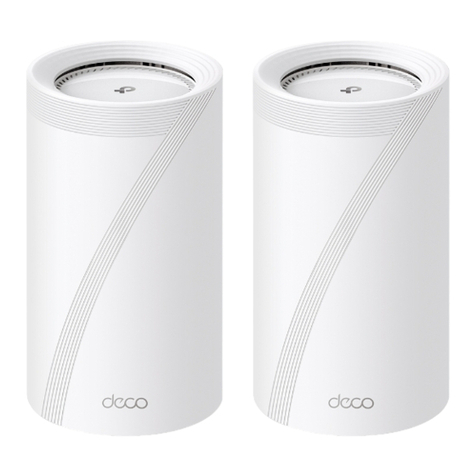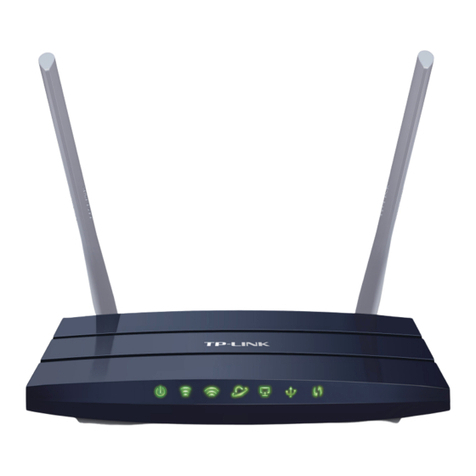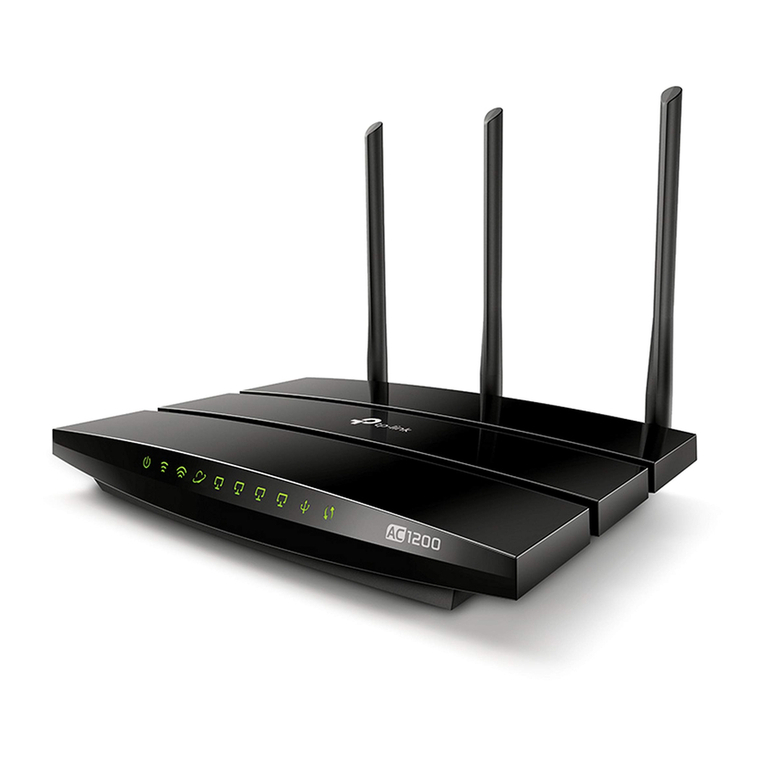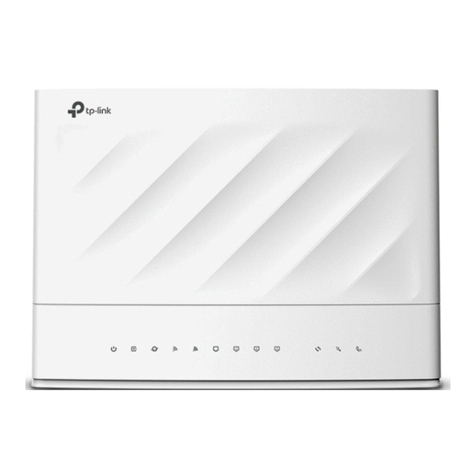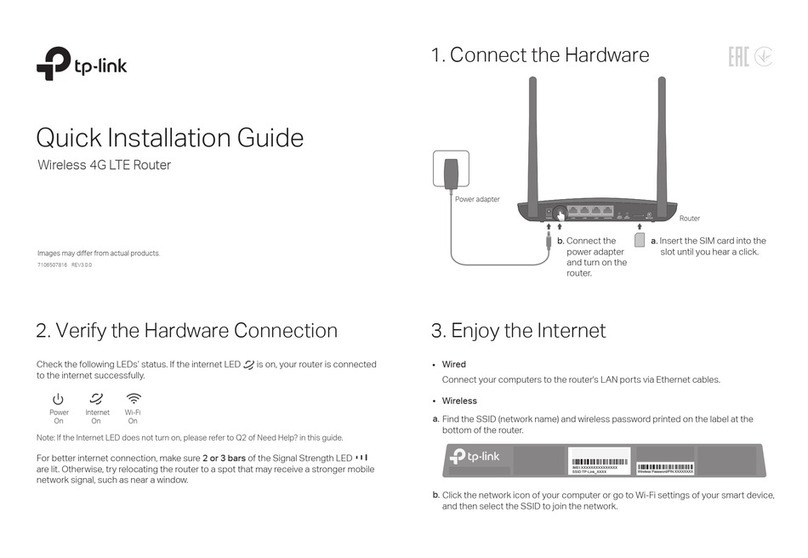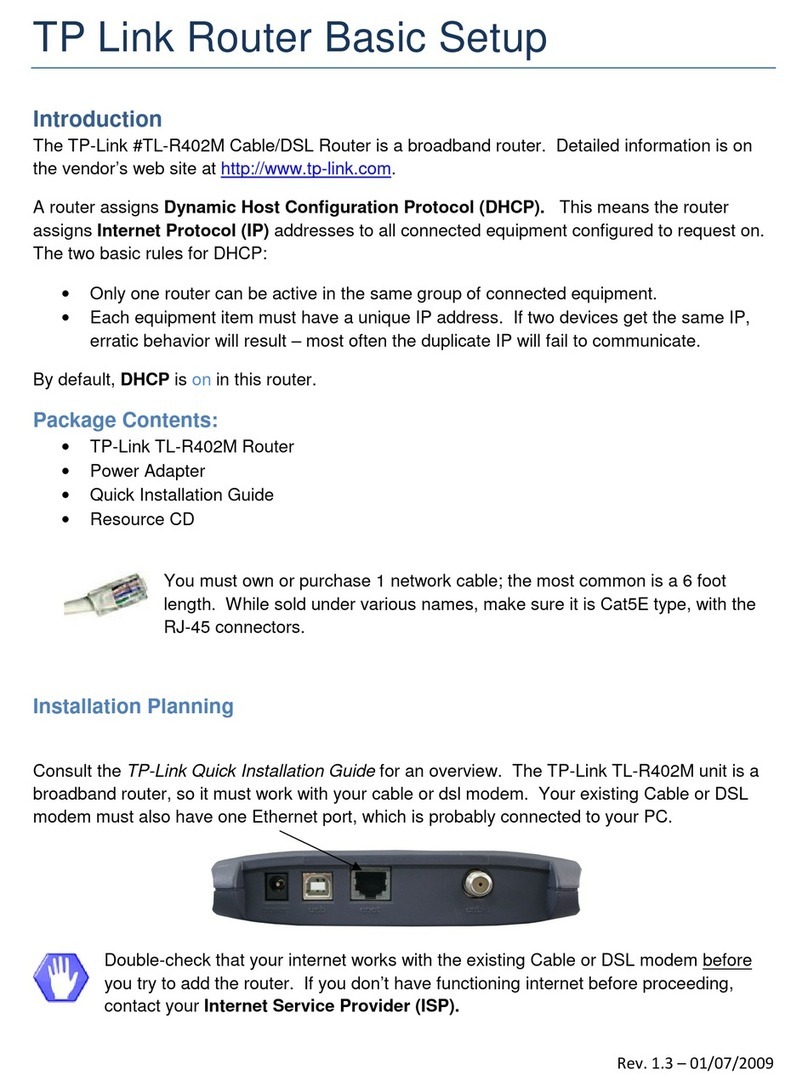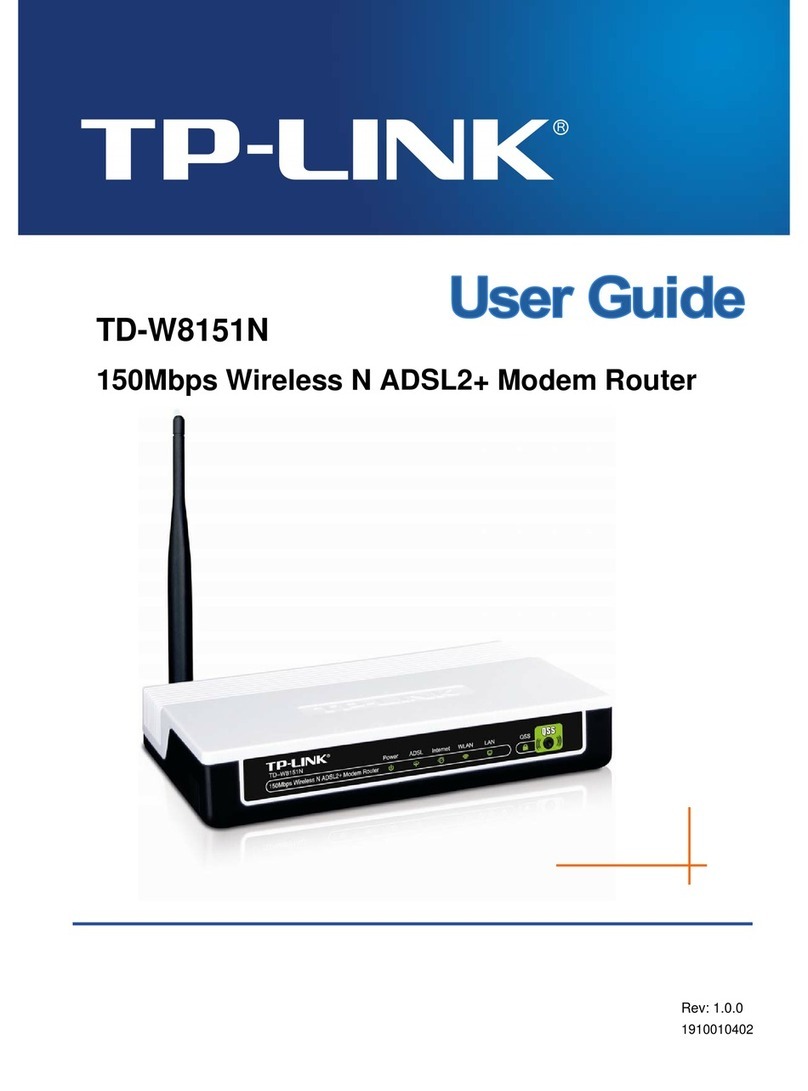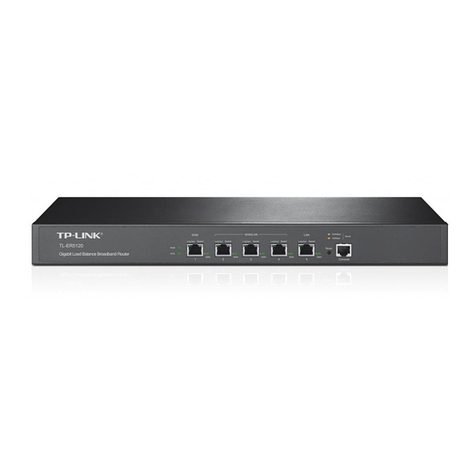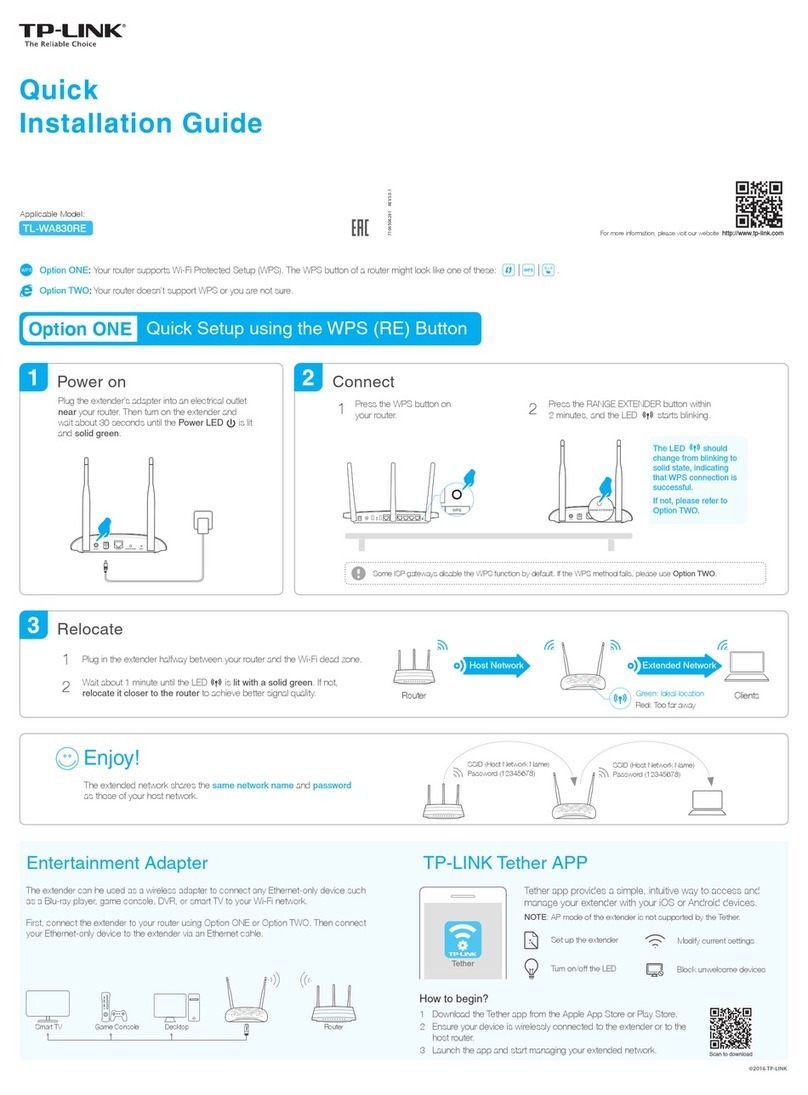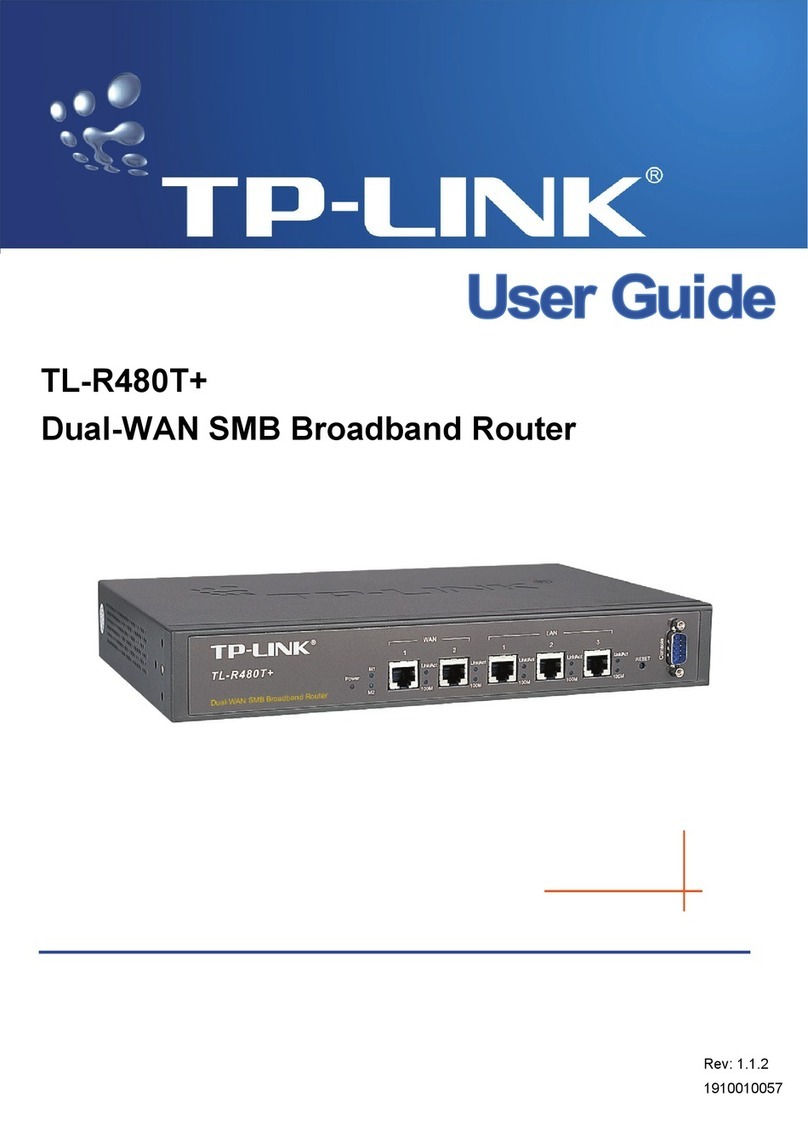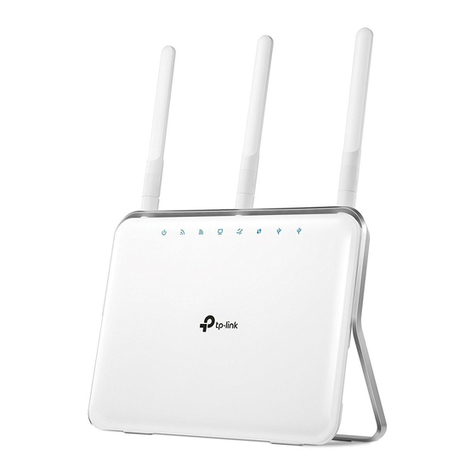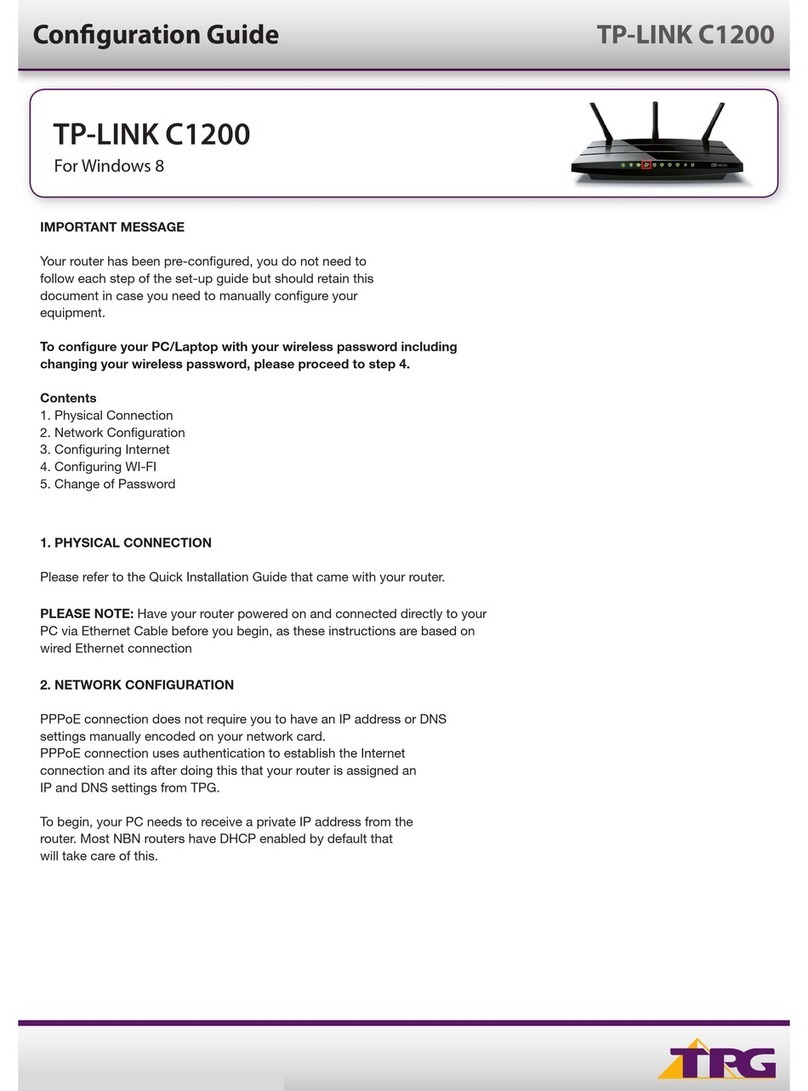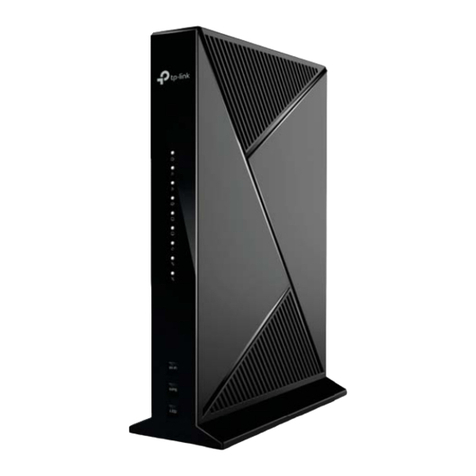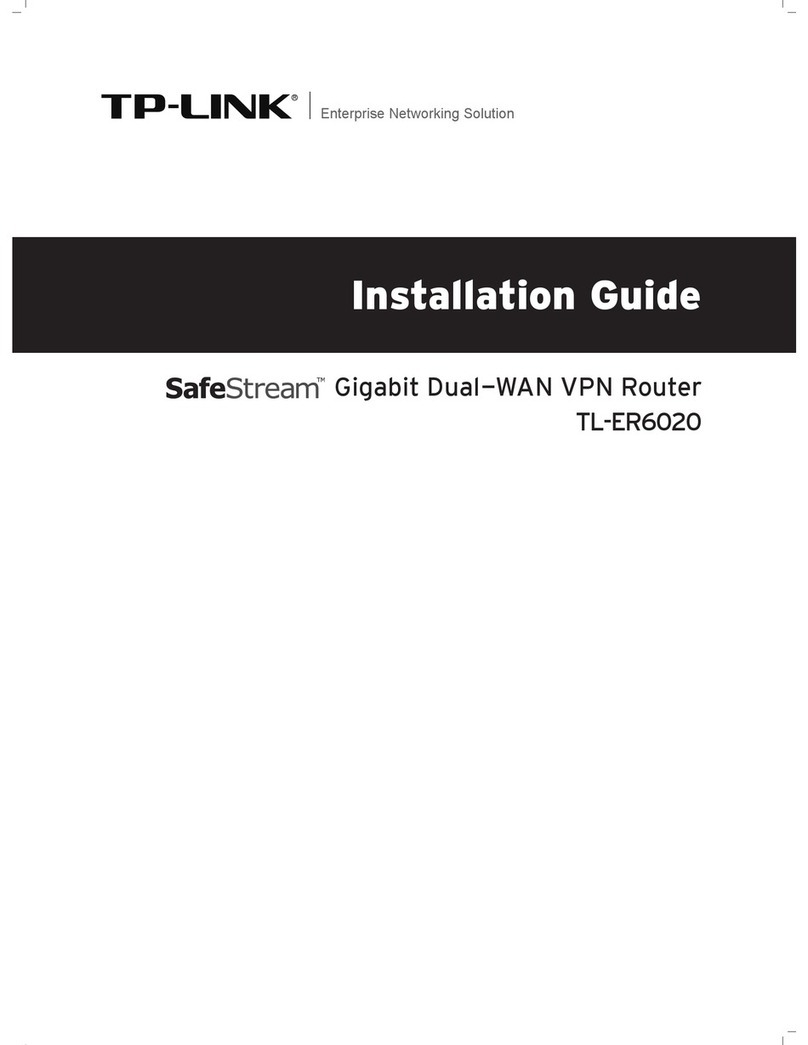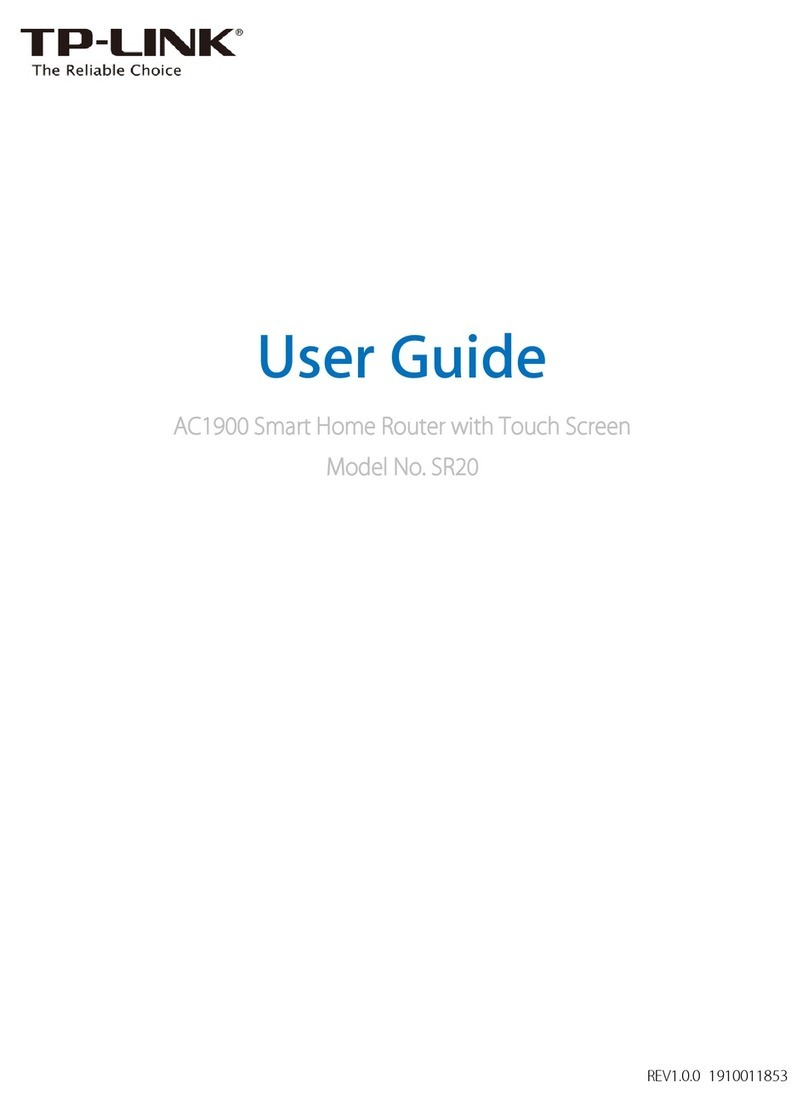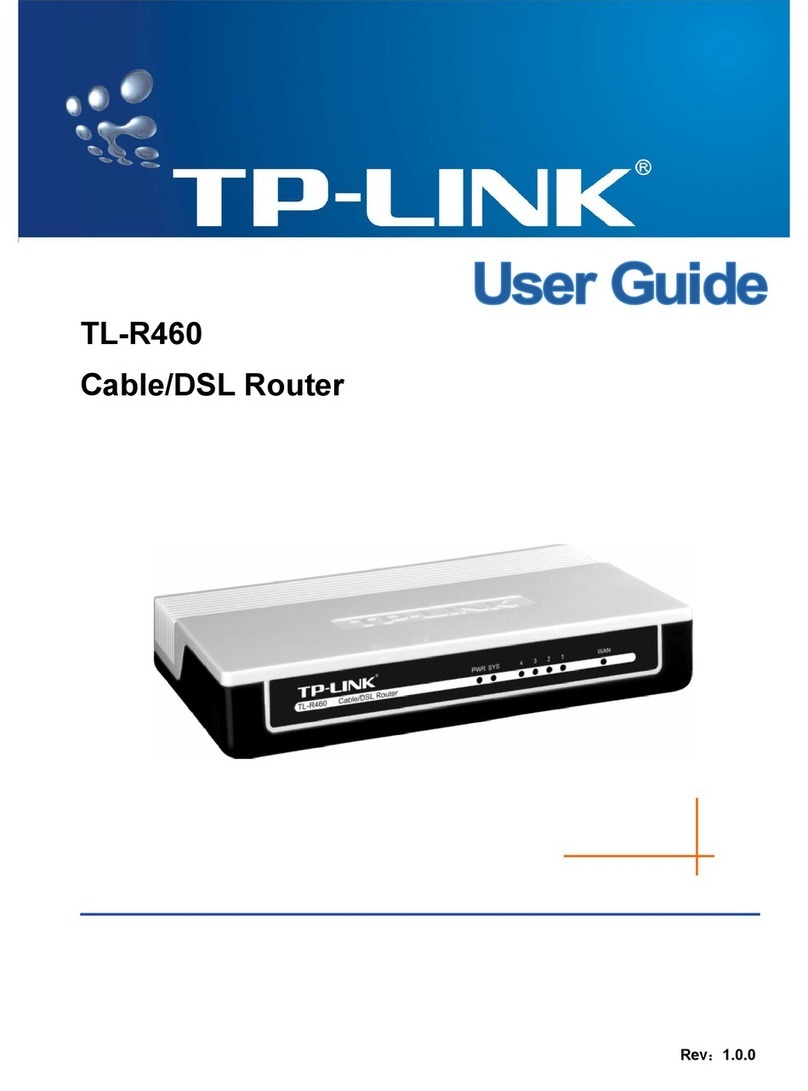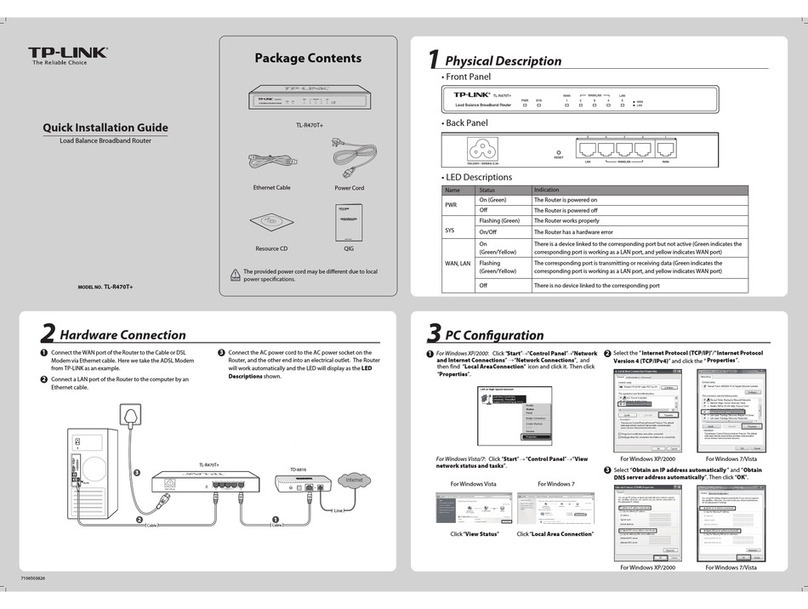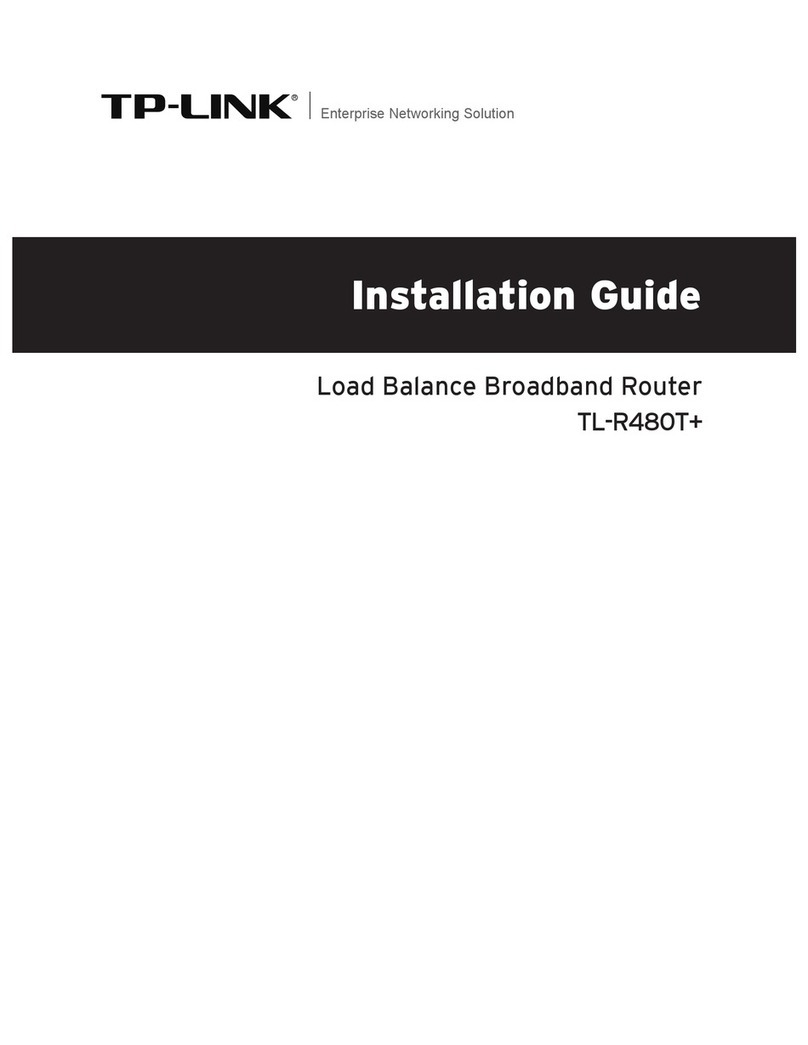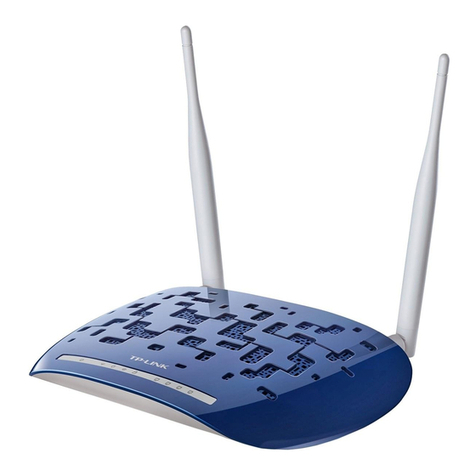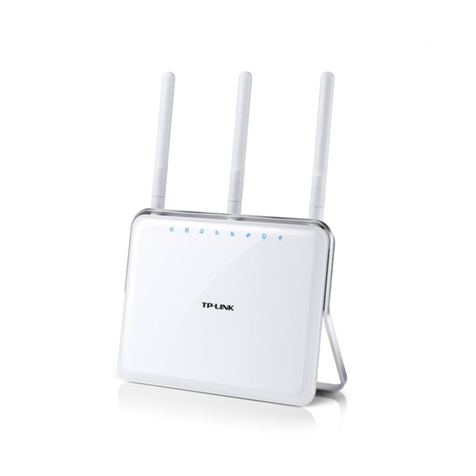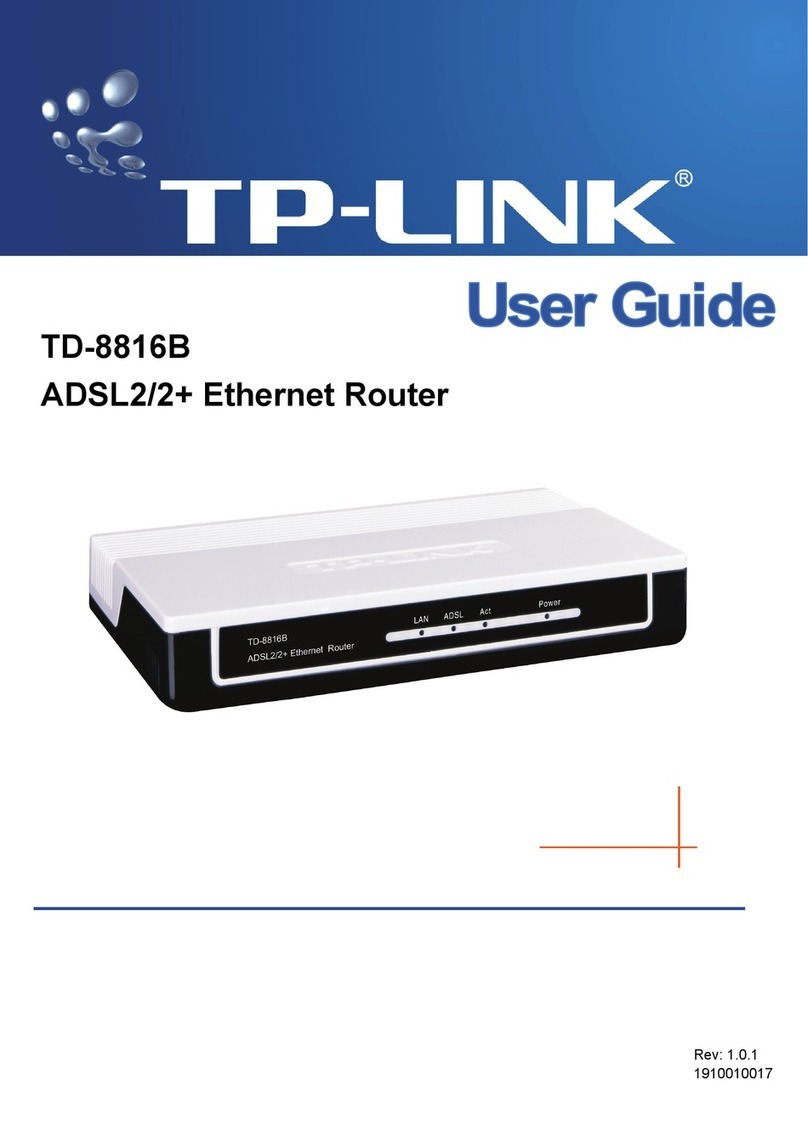USB Features
Use the USB ports for media sharing, storage sharing and printer sharing across your local
network. You can also set up an FTP server to access your files remotely through the Internet.
Remote Access
via FTP Server Media Sharing Local Storage
Sharing Printer Sharing
Select your WAN Connection Type, or click Auto Detect if you are unsure of
what your connection type is. Click Next and follow the instructions.
C
To learn more about the USB features, visit the website:
http://www.tp-link.com/app/usb, or simply scan the QR code.
Configure via Web Browser
Wired
Wireless
Enter http://tplinkwifi.net or http://192.168.0.1 in the address bar of a web
browser. Use admin for both username and password, and then click Login.
Note: If the login window does not appear, please refer to FAQ > Q1.
Configure the router using a web browser
Connect your computer to the router (Wired or Wireless)
1.
2.
A
Connect wirelessly by using the SSID (Network Name) and Wireless Password/PIN printed on the
product label on the rear panel of the router.
Turn off the Wi-Fi on your computer and connect the device as shown below.
FAQ (Frequently Asked Questions)
What can I do if the login window does not appear?
If the computer is set to a static or fixed IP address, change the setting to obtain an IP address
automatically.
Verify if http://tplinkwifi.net or http://192.168.0.1 is correctly entered in the web browser.
Alternatively, enter http://192.168.1.1 in the web browser.
Use another web browser and try again.
Reboot your router and try again.
Disable and enable the the network adapter in use again.
Q1.
What can I do if I cannot access the Internet?
Check if the Internet is working properly by connecting a computer directly to the modem via an
Ethernet. If it is not, contact your Internet Service Provider.
Open a web browser, enter http://tplinkwifi.net or http://192.168.0.1 and run the setup again.
Reboot your router and try again.
For cable modem users, reboot the modem first. If the problem still exists, log into the Web
Management page of the router, and go to Advanced > Network > MAC Clone, click Clone MAC
Address and then click Save.
Q2.
What can I do if I forgot my Web Management password?
Refer to FAQ > Q3 to reset the router, and then use the default admin (all lowercase) for both
username and password to log in.
Q4.
What can I do if I forgot my wireless network password?
If you have not changed the default Wireless Password, it can be found on the product label of the
router.
Log into the Web Management page, go to Basic > Wireless to retrieve or reset your wireless
password.
Q5.
How do I restore the router to its factory default settings?
While the router is powered on, press and hold the Reset/WPS button on the back until the LED
blinks.
Log into the Web Management page of the router, and go to Advanced > System Tools > Factory
Default, click Restore. The router will restore and reboot automatically.
Q3.
©2016 TP-LINK
SerialNumber
MacAddress
WirelessPassword/PIN
SSID
Thisdevice complies with part 15 of the FCC Rules. Operation is
subjectto the following two conditions:(1) This device may not cause
harmfulinterference,and (2) this device must accept any interference
received,including interference that may cause undesired operation.
Default Access:
http://tplinkwifi.net
Username: admin
Password: admin
Model: Archer C1900
Power: 12V 3.3A
IC:8853A-C9
FCCID:TE7C9
AC1900 High Power Wireless
Dual Band Gigabit Router
US
USB 2.0 Port
Ethernet Cable
SerialNumber
MacAddress
WirelessPassword/PIN
SSID
Thisdevice complies with part 15 of the FCC Rules. Operation is
subjecttothe following two conditions:(1) This device may not cause
harmfulinterference,and (2) this device must accept any interference
received,includinginterference that may cause undesired operation.
WiFi
USB 3.0
Select your time zone, and click Next.
B
admin
admin
Login
http://tplinkwifi.net
Confirm your settings, and then click Save to continue or Back to make changes.
Test your Internet connection, then click Finish to quit the Quick Setup.
Use the default or change the wireless settings, and click Next.
Note: If you change the default SSID and password, write down the new wireless settings.
D
E
F
WAN Connection Type
Time Zone
Wireless Settings
Summary
Test Your Connection
Next
-Please Select-
Time Zone:
WAN Connection Type
Time Zone
Wireless Settings
Summary
Test Your Connection
Wireless 2.4GHz:
Network Name(SSID):
Password:
TP-LINK_7AFF
12345670
Wireless 5GHz:
Network Name(SSID):
Password:
TP-LINK_7AFF_5G
12345670
ON OFF
ON OFF
Next
Back
WAN Connection Type
Time Zone
Wireless Settings
Summary
Test Your Connection
Congratulations!
You have completed the Quick Setup process.
Click Test Internet Connection below, then click Finish.
Test Internet Connection
FinishBack
Next
Auto Detect
Dynamic IP
Static IP
PPPoE
L2TP
PPTP
Back
WAN Connection Type Wireless Settings Test Your Connection
Summary
Time Zone
Note: If you are not sure which WAN Connection Type you have, use Auto Detect or contact your
Internet Service Provider (ISP) for assistance.
WAN Connection Type
Time Zone
Wireless Settings
Summary
Time Zone:
WAN Connection Type:
Wireless 2.4GHz
Network Name(SSID):
Password:
(GMT-05:00) Eastern Time (US Canada)
Dynamic IP
On
TP-LINK_7AFF
12345670
On
TP-LINK_7AFF_5G
12345670
Wireless 5GHz
Network Name(SSID):
Password:
Test Your Connection
Save
Back
TP-LINK's Tether app lets you conveniently access the router and:
View information about the clients on your network.
Block network access from specific users or devices.
Set up Parental Control with access time and content restrictions.
Change the basic wireless network settings easily.
How to start?
1. Scan the QR code to download the TP-LINK Tether app from the Apple
App Store or Google Play.
2. Ensure your smart device is wirelessly connected to the home network.
3. Launch the Tether app and start managing your home network.
Configure via Tether App
